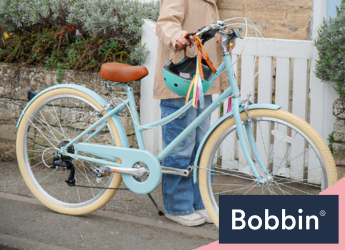What Age Is a 26-Inch Bike For?
Kids bikes come in a wide variety of wheel sizes, with 26-inch being among the largest options. While bigger wheels may seem better, they’re tailored to suit a specific age range. That’s what we’re about to find out here!
How Big Are 26-Inch Bikes?
A 26 inch wheel bike has a diameter of 26 inches. This measurement denotes the diameter of the wheel itself, excluding the tyre. The bike’s size, including the frame and other components, may vary depending on the brand and model.
What Is the Specific Age Range for This Wheel Size?
26-inch bikes are designed for children and teenagers between 9 and 16. Their wheel diameter is well-suited for this age group. This makes them ideal for kids transitioning to larger bicycles as they grow.
Children (Approximately 9-12 years old)
- Average heights: 4’2” to 4’9” (127 cm to 145 cm)
- Characteristics: 26-inch bikes for children often feature lighter frames. They may come with adjustable saddle height and handlebars to accommodate growth spurts. Idea use for both on-road and light off-road use.
Teenagers (Approximately 13-16 years old)
- Average heights: 4’9” to 5’6” (145 cm to 168 cm)
- Characteristics: 26-inch bikes for teenagers may offer more advanced features and components. They’re designed to handle more demanding terrains, such as moderate off-road trails. The frames may be sturdier, allowing for increased durability and better performance. Teenagers can choose from various styles, e.g. mountain bikes or hybrid bikes.
These age ranges and recommended sizes are general guidelines. Each individual’s height, body proportions, and personal preferences may vary. Riders should test-ride different bikes. They should also consult with bike experts or get personalised recommendations.
What Bike Models Are Available?
26-inch kids’ bikes are popular for their versatility and suitability for various terrains. They have been used in various types of bicycles, including:
- mountain bikes
- hybrid bikes
- urban or commuter bikes
When considering a 26-inch bike, keep in mind that the wheel size is just one factor. The overall frame size, geometry, and components also play crucial roles.
Does My Child Need a 26-Inch Bike?
Whether your child needs it will depend on their age, height, and comfort level. This wheel size is suitable for taller children who have outgrown smaller bikes. If your kid falls within the ideal age range and has reached the appropriate height, a 26-inch bike might be a suitable choice.
Other factors to consider
As children grow, their height increases, leading to changes in their body proportions. This growth affects their interaction with bikes. For instance, a taller child will require a larger bike to accommodate their longer legs and arms.
Leg length is an essential factor in bike sizing decisions. The rider should be able to reach the ground with their feet while sitting on the saddle. If the bicycle is too large, the rider may struggle to stop and manoeuvre safely. It may cause discomfort and restricted pedalling motion if too small.
Arm reach also affects the rider’s posture and control. The rider should be able to reach the handlebars comfortably. The right reach ensures a relaxed riding position, proper steering control, and reduced body strain.
Torso length is another consideration. It determines the rider’s overall body position on the bike. A longer torso may require a bike with a longer top tube length to provide space and a balanced riding posture.
Remember, a properly sized bike promotes comfort, safety, and optimal performance. Use our kids bike size guide for more information. Feel free to contact us if you have any questions!











